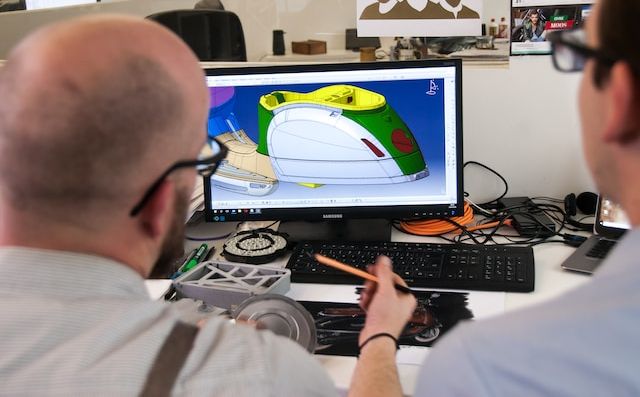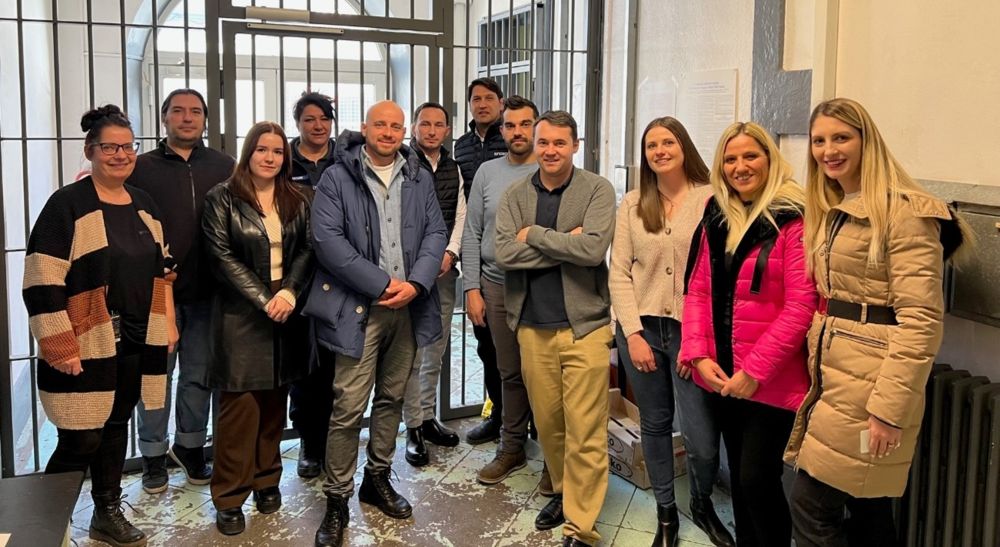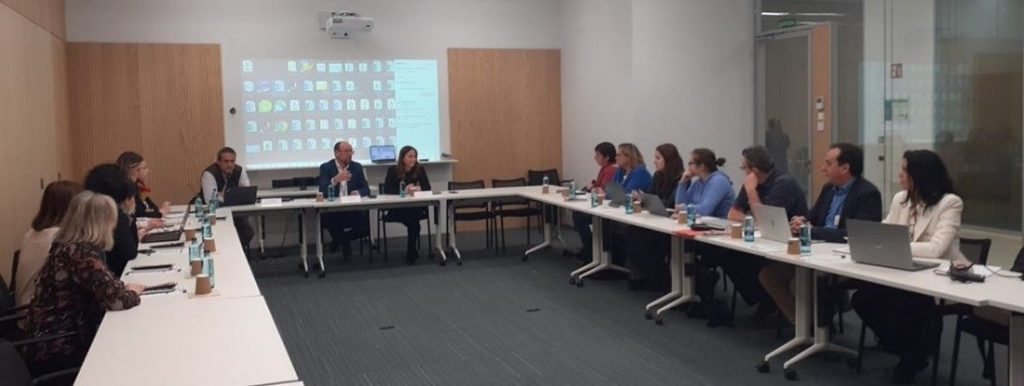A group of partner organisations working in criminal justice across Europe is investigating and putting into practice the potential of including technical drawing skills in inmate vocational training. The ultimate objective is to improve offenders' readiness for productive employment after release and avoid re-incarceration.
After being released from prison, finding work can be difficult for a variety of reasons. The stigma associated with having a criminal record is one of the biggest obstacles, and it can be difficult for former individuals deprived of liberty to find organisations willing to hire them.
In fact, one significant problem is that many individuals lack the qualifications and education required to enter the job market of today. Moreover, a sizable portion of this population has a lack of work experience.
Using Vocational Training Programmes to land offenders jobs in specific industries
Education is one key aspect of the important rehabilitative role of prisons and has an important, even if often indirect, role to play in many of the other treatment programmes in which a prisoner can engage while in prison.
Providing positive learning environments, helps prisons support their inmates to make good use of their sentences, by changing their personal attitudes and perceptions, addressing gaps in their learning skills, and improving their employability.
Here, vocational training programmes in prisons play a crucial role. These programmes aim to provide inmates with skills to find a job and earn a decent living wage. Studies show that inmates who receive vocational training not only find employment, but are more likely to stay out of prison1,2,3. Up to 89% of those who return to prison are unemployed4.
This evidence underlines the need of creating programmes to better rehabilitate individuals in custody and broaden their employment options after their release from prison.
To ensure successful outcomes, induction and vocational training must enable individuals to access job opportunities and motivate them to invest in the career path offered by the industry.
Learning Computer-Aided Design (CAD) in prison
The integration of Technical drawing using CAD in vocational training in prisons holds significant potential.
CAD is a software tool that facilitates the design and optimisation of products, structures or systems. With CAD, users can develop detailed 2D and 3D models, refine and perfect performance and functionality through computer simulations, and produce technical documentation for manufacturing or construction.

What is the STEP2LAB project?
The STEP2LAB – Systematic Transition from Prison to the Labour Market – is a project aiming to strengthen the links between industry companies, training centres, and detention centres, to support released individual’s integration into the labour market. To achieve this, the project is developing an e-learning platform and a vocational guidance programme focused on motivating for incarcerated individuals.
The framework being developed by the project will help on their induction into a chosen industry, developing skill-oriented careers that can provide them new life opportunities after completing their prison sentence.
The project held a Short-Term Joint Staff Training Event (STJSTE) in Le Puy-en-Velay, France, from the 14th to the 16th of February, 2023. This 3-day event gathered a total of 18 stakeholders from France, Italy, Portugal, Spain, and Romania.

The event had expert contributions from professionals in the fields of young offender training and education, adult education, and representatives from the industry sector. The partnership discussed the significant role of education and employment in the process of social reintegration for individuals deprived of liberty.
This exchange of knowledge provided key insights about how to create the training program for this specific target group.

Later, on the 14th and 15th of March, 2023, representatives of the partner organisations gathered in Barcelona, Spain, to guide STEP2LAB project’s work plan. The consortium discussed the project developments and next steps. The second day of the event, included a visit to the Educative Centre l’Alzina (Centre Educatiu l’Alzina), which the partners CENTIMFE work closely with.
This educative centre for underaged boys was the first institution in Spain to provide job occupations for juvenile offenders. Their system ensures that every individual has access to a psychologist, a social worker, and a tutor. With this support, they are able to guide and develop individualised goals for each boy (including workshops, psychological treatments, and job occupations, among others).
In this visit, the partnership was able to learn more about their workshops (in welding, painting, construction, and more) and job occupations.
References
1 Moore, M. W. (2001). Analysis of the impact of inmate programs on recidivism. Florida Department of Corrections, Bureau of Research and Data Analysis. Tallahassee, Florida.
2 Batiuk, M. E., Lahm, K. F., McKeever, M., Wilcox, N., & Wilcox, P. (2005, February). Disentangling the effects of correctional education. Criminal Justice Quarterly, 5(1), 55-75.
3 Davis, L. M., Bozick, R., Steele, J., Saunders, J., & Miles, J. N. (2013). Evaluating the effectiveness of correctional education – A meta-analysis of programs that provide education to incarcerated adults. RAND Corporation.
4 Kimmitt, S. (2011, June). The impact of community context on the risk of recidivism among parolees at one-, two-, and three-year follow-ups. Honors Thesis, Ohio State University.
Know more about this project

STEP2LAB
Systematic Transition from Prison into the Labour Market
STEP2LAB is led by the Portuguese project’s coordinator CENTIMFE (Technological Center for Molds, Special Tools and Plastics Industry).
The remaining consortium members of the STEP2LAB project are IPS_Innovative Prison Systems (Portugal), Mioveni Penitentiary (Romania), Greta du Velay (Velay Region Educational Institutions Group) (France), IRFIP (Religious Institute of Vocational Education and Training – Romania), CIRE (Center for Reintegration Initiatives – Catalonia, Spain), and KIMW-Q (Non-profit KIMW Qualification Association – Germany).
For more information on the STEP2LAB project, please visit its page.
Related projects

VR4React
Reducing Reactive Aggression through Virtual Reality

VR4DRUG Rehab
Developing and Using Virtual Reality Technology for the Rehabilitation of Drug Users in Probation Services

VISION
Visualising the Future Through Training

ViRTI
Virtual reality for training inmates

Turning Blue
Integrating Young Offenders Through the Blue Economy

TRIANGLE
Secured digital education system for vocational skills for youngsters in closed institutions

TRAIVR
Training of Refugee Offenders by Virtual Reality

SPORT4PRISONS
New sports method for prisons as a tool to support competency development, positive values, and reintegration

RE[ENTER]
Strengthening the capacity of criminal justice professionals and volunteers

Probationet
A flexible, multidisciplinary and transnational VET model for the PROBATION services and practitioners
Related news

Enhancing child-friendly juvenile correctional training across Europe: IPS presents key findings at CRS 2025
Read More »
Building pathways to crime prevention through Community Policing and Rehabilitative Justice
Read More »
New technical guide launched to support Prison Services in procuring Offender Management Systems
Read More »
Strengthening integration across Europe: Collaborative efforts to support refugee inclusion and radicalisation prevention
Read More »




